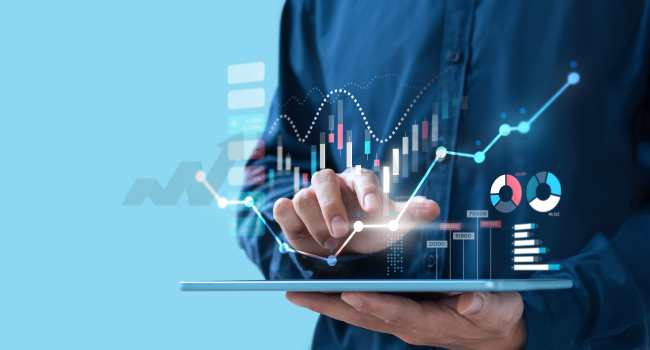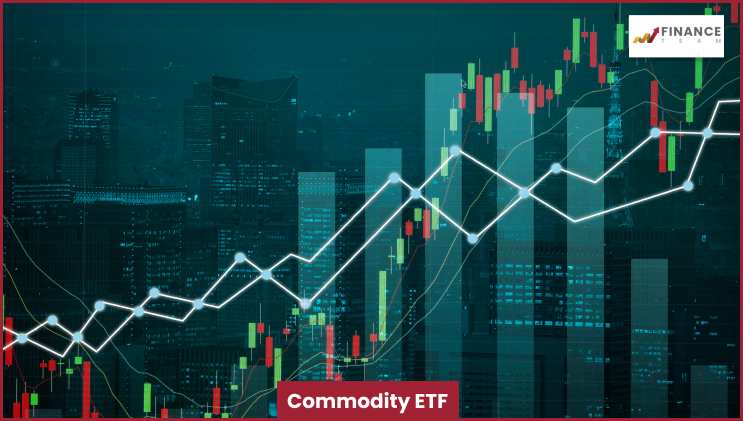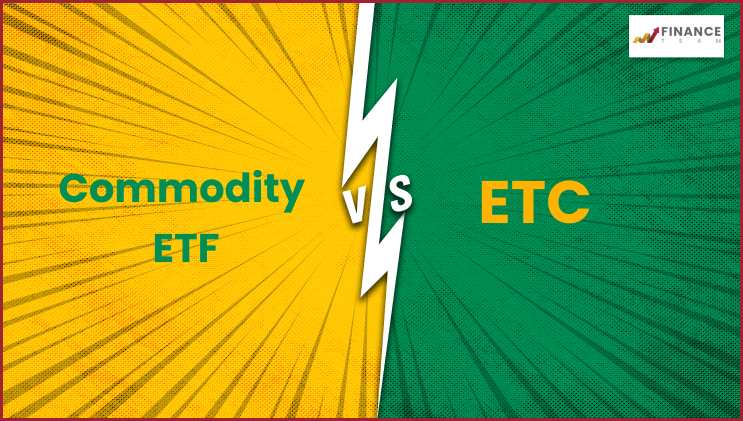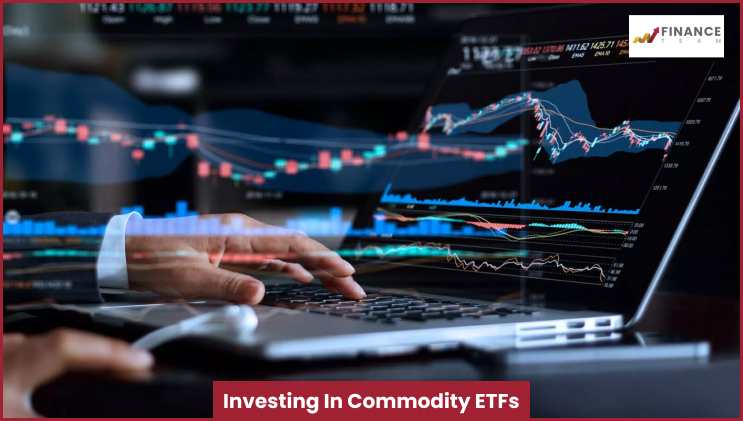- What Is A Commodity ETF?
- 4 Types Of Commodity ETFs
- 1. Equity ETFs
- 2. Exchange And Traded Notes
- 3. Futures-Based Funds
- 4. Physically Backed Funds
- What Is The Difference Between ETC And Commodity ETF?
- Which Commodity ETFs To Buy In 2022?
- What Are The Best Commodity ETFs?
- Are Commodity ETFs Investments Free Of Risk?
- Frequently Asked Questions (FAQs):
- 1. Is ETFs Are Tracking All Commodities?
- 2. Name The First-Ever Commodity ETF?
- 3. Do Commodity ETFs Pay Dividends?
- 4. ETF Is Good For Beginners?
- Wrapping Up:
What Are Commodity ETFs? How To Invest In 2022?

Commodity ETFs are an exchange of traded funds (ETF). A commodity ETF is focused on the single commodity held in the physical storage investments. The commodity ETF keeps the tracking of physical commodities. For example, agricultural goods, natural resources, and other precious metals. Many investors prefer commodity ETF investments. Because this ETF investment is more secure and profit-making,
Let’s see the bookish definitions of commodity ETF.
What Is A Commodity ETF?
A commodity ETF is a specific type of exchange-traded fund. When you want to invest in physical goods and agricultural commodities, and precious metals, these ETF investments are going to be your best pick.
The ETF focuses on different types of investments related to futuristic contacts. The single commodity concerns physical storage. In this list, everything belongs from agricultural goods to natural resources.
If you like to make more profit out of agricultural products and precious metals. Then commodity ETFs investment is going to be your best selection. But there is always a difference between a commodity ETF and a regular ETF.
4 Types Of Commodity ETFs
Before you start investing in commodity ETFs, you have to know what are the different types of best commodity ETFs. You have to analyze the budget and potential risk of the ETFs.
1. Equity ETFs
The commodity ETFs equity funds are investing in the companies that produce or transport the commodities. These types of commodity funds are referred to as equity ETFs.
With these ETFs, the investors are getting access to certain specific sectors. This process is less expensive, but investment terms are profitable.
2. Exchange And Traded Notes
Another type of commodity ETF is completed with exchange-traded notes. This is an unsecured debt that is issued and backed by the maturity date. Every investor is paying the capital gains when ETN is sold. If you are looking for a better tax structure.
Then start to invest in the ETNs. Just before starting investing, one thing makes sure that you research the bank’s history and evaluate the credit quality.
3. Futures-Based Funds
The future-based commodity ETFs and funds are all related to the future portfolios holdings and storing. Investors are enjoying and paying the costs which are associated with physical holdings. These ETFs are adding advantages to your future portfolios.
Investors are enjoying the future-based funds which are incorporated in the limited partnerships. 60% of the capital gains are taxed as long-term gains. And 40% of the percent is counted under the ordinary rate.
4. Physically Backed Funds
Physically backed commodity ETFs keep the physical commodities. There is always a minimal supply of precious metals. Having physical possessions and commodities eliminates tracking and other risks.
The ETFs are associated with physically holding and storing assets. But risks are unavoidable. You have to be careful while making the physically-backed funds ETFs. As the physical assets are central-backed funds which you can not overlook.
What Is The Difference Between ETC And Commodity ETF?
| No | Commodity ETF? | ETC |
| 1. | The commodity ETF is included as the futuristic asset-backed contract. They are especially tracking the performances of a particular group or commodities. | ETC is the combination of securities that are linked with similar types of investment profiles. |
| 2. | ETC is a combination between the ETF and ETN. This process is also backed by an underwritten note. | An ETC has a note of debt instrument, which is underwritten by the bank issuer. |
| 3. | ETF tracks the individual holdings, which is better for tracking errors. The movements of any commodity price do not accurately reflect the actual price movement. |
ETC has an exact fee number of tracking errors. Notes are tracking the index. |
| 4. | Investors commonly purchase ETFs when they are hedging against inflation. | ETC purchasing during inflation is not profitable as ETFs. |
Which Commodity ETFs To Buy In 2022?
The best three commodities ETFs to buy in 2022 are
- COMT – iShares GSCI Commodity Dynamic Roll ETF
- PDBC – Invesco Optimum Yield Diversified Commodity With No K-1 ETF
- BCI – Aberdeen Standard Bloomberg All Commodity With K-1 Free ETF
All of these three belong in the list of top commodity ETFs of 2022. If you are thinking of finding the best commodities ETFs for 2022. You can go through all of these three company profiles and then select the compatible one. Now let’s see what are the best commodity ETFs.
What Are The Best Commodity ETFs?
You know which are the three best commodities ETFs. Along with these three, you can add many more to the list.
- iShares S&P GSCI Commodity Indexed Trust
- United States Brent Oil Fund
- United States Natural Gas Fund
- Elements Rogers International Commodity Index-Energy TR ETN
- iPath S&P GSCI Total Return Index ETN
All of these five are the best commodity ETFs of 2022. If you like to invest in the sectors which have multiple investments, then these options are going to be your best investments place.
Are Commodity ETFs Investments Free Of Risk?
The commodity ETFs have some unique risks. Here are four potential risks of the commodity ETF.
- You are expecting a higher price. But many times, the commodity ETFs prices are in backwardation.
- The sudden cost reductions and returns are causing the ETF to drag. This way, it becomes complicated to track the commodity’s price spot.
- The ratios of unleveraged ETFs can range from 0.5% to 1%. From the future perspective, traders can bid up top down. While putting the ETF at risk.
For example, the oil commodity ETFs are always higher in risk. But the return chances are good. The volatile nature of the energy market is the main culprit of this cause. But if you like to invest in the oil and gas sector ETFs, you can start investing blindfolded.
Frequently Asked Questions (FAQs):
1. Is ETFs Are Tracking All Commodities?
Commodity ETFs are now having a wide range of products from valuable metals, oils, and natural gas. You can construct it in a different way according to the tax situation.
2. Name The First-Ever Commodity ETF?
Central Fund of Canada is the first gold exchange-traded product. The closed-end funds were founded in 1961.
3. Do Commodity ETFs Pay Dividends?
You will not get any dividends throughout the year. ETFs hold the physical commodity but do not distribute the profit amount. But they do not produce the annual tax cost for the individual investors. And they do not produce the annual tax cost for the investors.
4. ETF Is Good For Beginners?
Yes, ETF investments are suitable for beginners. Most of these investments are inexpensive. Even risk chances are lower than the individual stock investments.
Wrapping Up:
If you are thinking of investing in commodity ETFs, oil, gas, and valuable precious metals are the most profitable areas. But depending on your requirements, you have to select the type of ETF. But before investment, analyze all the associated risk factors.
So, which types of ETF do you prefer most? Do not forget to share your opinion in the comment sections.
Read Also:
- What Are Specialty Funds? How to Invest In It?
- What Are Global Funds? How To Invest In It?
- What is an Initial Public Offering? How to check a Good IPO and invest?














